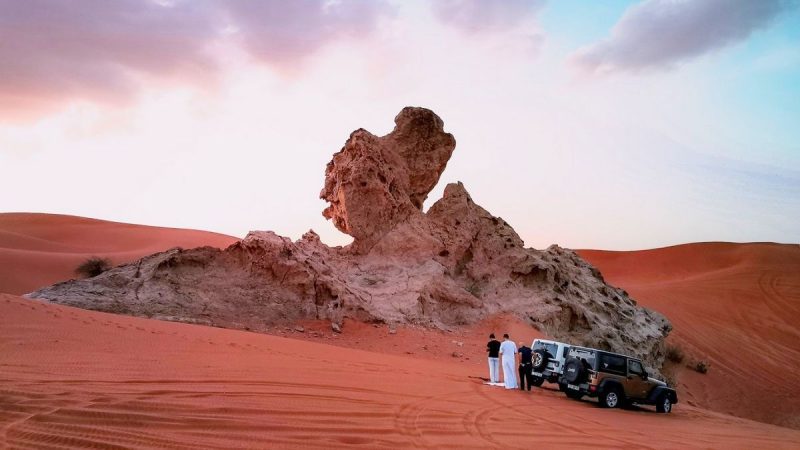Deserts get an unfair reputation. People imagine them as empty, hot, and lifeless. But spend even half a day inside Mleiha National Park in Sharjah and you’ll see how wrong that picture is. I wasn’t expecting much the first time I thought about these dunes, but what I found was something closer to a living museum.
Mleiha National Park: Sharjah’s Desert That Refuses to Stay Quiet
This place didn’t appear by accident. It came about through an Emiri Decree, backed by His Highness Dr Sheikh Sultan Bin Mohammed Al Qasimi. Today it’s managed by Shurooq and covers more than 34 square kilometres, big enough that you can walk for hours without looping back. Add to that UNESCO listing the wider Faya Palaeolandscape as a World Heritage Site, and you suddenly realise this isn’t just about scenery, it’s global heritage.
The Land Shifts As You Move
What really caught me off guard was how quickly the ground keeps switching characters. One moment you’re on soft golden dunes, then suddenly your shoes are crunching over wide gravel plains. Push on a little more and you end up facing rugged limestone ridges, carved by time into shapes that look eerily like the remains of some lost city. It feels like three different deserts stitched together.
Plants That Hold It All Together
Honestly, the plants deserve more credit than they get. Without the Ghaf trees, Acacias, and even stubborn shrubs like Sodom’s Apple, there’d be little to talk about here. They hold sand in place, keep rare moisture locked in, and give shade when everything else is scorching. They’re the quiet engineers of the desert.
And because of them, the animals stay. I spotted an Arabian Red Fox darting off at sunset, and a Sand Gazelle keeping its distance but clearly curious. Reptiles thrive too. The Sandfish Skink moves like it’s swimming through sand, while the Arabian Horned Viper blends in so well you wouldn’t see it unless it twitched. Overhead, Bonelli’s Eagles patrol as if they own the sky.
More Than Just Looking Around
The park offers guided walks, which honestly make a difference. Without a guide, I would have walked right past half the plants without realising how important they are. Horse riding across the dunes feels like stepping back in time, a reminder of how people once crossed this land. Then there are the quiet spots where nothing happens at all except the silence, the heat, and the hum of life if you stay still long enough.
Conservation Isn’t Optional Here
It’s easy to forget how fragile deserts are. Mleiha has a dedicated conservation zone, guarded by the Environment and Protected Areas Authority, to make sure visitors don’t leave lasting scars. Shurooq treats the park’s wildlife and plants as natural wealth, something to safeguard even as eco-tourism grows.
Also Read: UAE Residents Are Crossing Emirates To Get A Taste Of Sharjah’s Viral Mleiha Organic Milk
In the end, Mleiha isn’t just about spotting animals or admiring dunes. It’s about changing the way you look at deserts.
Cover Image Courtesy: Shurooq/Website

